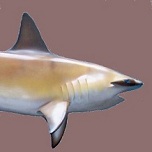Study of juvenile hammerhead nursery grounds begins in Costa Rica
 Mision Tiburon begins study of juvenile hammerhead nursery grounds in Golfo Dulce, Costa Rica
Mision Tiburon begins study of juvenile hammerhead nursery grounds in Golfo Dulce, Costa Rica
MigraMar, 15 August 2011.
In June 2011, Mision Tiburon, one of the Costa Rican partners of Migramar, placed ten ultrasonic tags on juvenile hammerheads in Golfo Dulce, and installed three receivers in a key nursery ground
This tagging expedition is part of a new study: Conservation of the scalloped hammerhead Sphyrna lewini and its critical habitat in the Golfo Dulce, funded by Conservation International and aimed at identifying and describing critical habitat used by the shark, such as nursery grounds. This research is being undertaken in collaboration with the artisanal fishers of Golfo Dulce, making use of their Traditional Ecological Knowledge (TEK) and by means of observers during fishing activities.
The analysis of the annual biological and fishery data reveals the existence of an important nursery area for hammerhead sharks near Puerto Jimenez, which is characterized by shallow waters (10-30 m) and sandy and muddy bottoms, influenced by mangroves, rivers and streams. Due to the importance of this area for juvenile hammerhead sharks, the MT team began an acoustic tagging program, which will provide the knowledge necessary to efficiently protect the juveniles and pregnant females of this specie that visit the coastal waters of Golfo Dulce. At the same time, this project will significantly contribute to the conservation of the hammerhead shark, whose only critical habitats currently protected are emblematic oceanic islands of the Eastern Tropical Pacific (ETP) such as Cocos, Malpelo and the Galapagos Archipelago, where adults spent part of their time in the cleaning stations. Actually, in the ETP, coastal critical habitats such as nursery areas have not yet been protected from anthropogenic activities (fishing, pollution and habitat destruction).
Source: MigraMar
